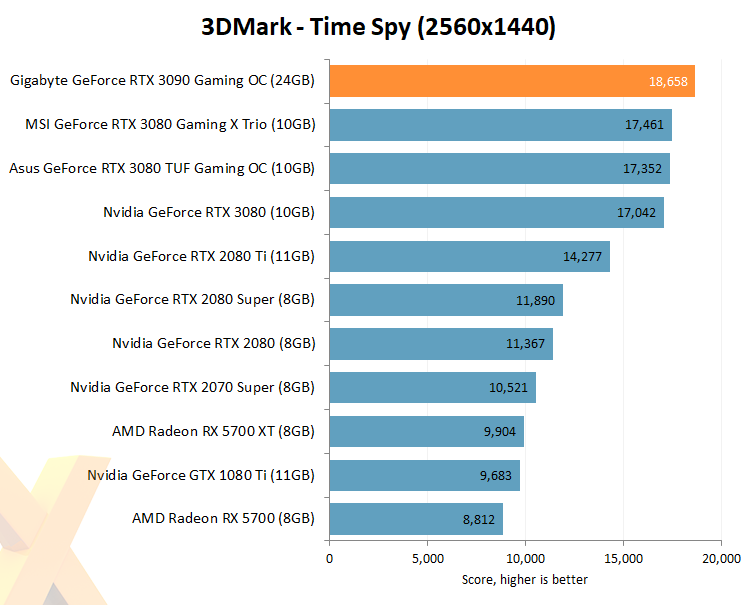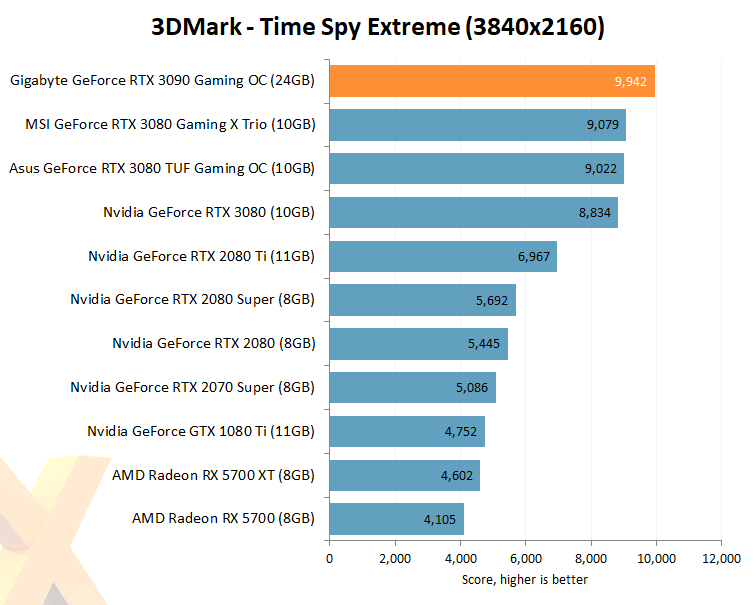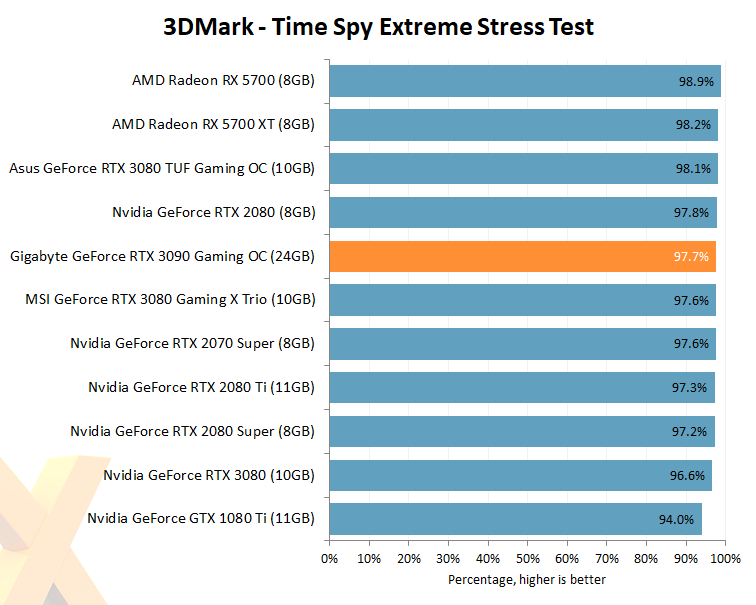3DMark Time Spy
 |
Rendered at QHD or UHD resolutions and making use of DX12 technologies such as asynchronous compute, explicit multi-adapter and multi-threading, Time Spy is a modern 3DMark benchmark that hints at GPU potential in today's latest games.



More cores? Check. More bandwidth. Check. More of everything that matters? Check. So why is it that RTX 3090 isn't kicking the various RTX 3080 cards into touch? The answer is that the Gigabyte OC card averages around 1,760MHz under long-term boost. The partner RTX 3080s, meanwhile, average 1,950MHz or so.
Doing the maths means this RTX 3090 pushes out 36.945 TFLOPs while the MSI RTX 3080 can do 33.946 TFLOPs. Not a lot in it. Sure, the RTX 3090 has faster memory (but looser latencies?) for higher bandwidth but the differences between partner cards on a gaming basis is not as large as one might ordinarily expect.
This by-the-numbers exposition helps explain why the Gigabyte RTX 3090's lead at the Extreme preset is less than 10 percent.









